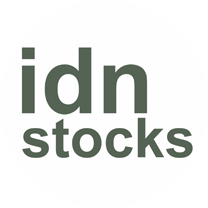ACE Hardware Huge Inventory Iceberg Ahead
Investors have been buying an inventory growth story and lower ROE since FY12. As ACE’s inventory growth has always exceeded its sales growth since FY11, there might be inventory write-offs or aggressive discounts given in the future to reduce its excessively high c.200 inventory days (as at end-FY15). Furthermore, due to its high inventory, the company’s asset turnover has declined since FY12, as well as its ROE.
ACE Hardware On Grand Sale
Bumi Serpong Damai Booked 50% YoY Marketing Sales Growth
Sido Muncul Targets 10% YoY Sales Growth in 2018
October Retail Sales Growth Slows
Infrastructure Projects Boost Bulk Cement Sales Growth
HI division’s inventory days on the rise. We think its HI division’s rising inventory days represent the first visible crack in ACE. From just 96 days in FY12, the number shot up to 209 days in FY15. This is corroborated by the company holding discounts of up to 50% to clear its cleaning aids inventory in Jan 2016. It is currently giving 70% discounts on lighting items. Furthermore, annual gross sales growth of HI items has also fallen to only 0.4% in FY15 (vs 26% and 18% in FY13 and FY14 respectively).
TAXI Increase its Working and Cost Efficiency
ABM Investama Cushion Play
Bank Central Asia’s EDC transaction Reached IDR157Trn
Government SBSN Auction Worth IDR5Trn Next Tuesday
Rally Continues Despite Looming Fed Rate Hike
Lifestyle division’s inventory is also very high at 189 days at end-FY15. Similar to the HI division, with the exception of FY14, inventory growth of its lifestyle division has always exceeded its annual sales growth since FY12. Annual sales growth of lifestyle products has been flattish at 9.1% in FY15 (vs 11.5% and 13.0% in FY13 and FY14 respectively). ACE should divest its toy division, in our view. ACE’s toy division’s sales only contributed 4.5% of total gross sales in 2015 and its sales growth was only 3% YoY in FY15 (vs 45% and 30% in FY13 and FY14 respectively).
Middle to Up Class Consumers Maintain Mitra Adiperkasa’s Performance
Mitra Adiperkasa Fill its 200 Outlets Target
Mitra Adiperkasa Revenue Growth 13.5%
Jokowi do the Manufacturing and Industrial Cooperation with South Korea
November 2017 Core Inflation Lowest Since 2004
Revising our FY16 and FY17 forecasts. We tweaked our FY17F earnings by -1.5%, and kept our FY16 estimate (while maintaining our SELL rating and TP of IDR640) to reflect: i. slower sales growth in the home improvement and toys divisions; and ii. lower advertising expense (as a percentage of sales). Our TP is based on a DCF valuation, assuming a 12.2% WACC and 3% terminal growth rate, which implies fair 18x 2016F and 16x 2017F P/Es – considering its large inventory problem. We assume a risk-free rate of 8.25%, a market risk premium of 5.0%, an equity beta of 0.8 and a terminal growth rate of 3%, which results in an implied WACC of 12.2%.
Mahaka Media Focus in Advertising Revenue
Wismilak’s Sales Pressure amidst Weakened Purchasing Power
VIVA Revenue Increase 7.42% in 3Q17
2018 National Budget Expansive and Populist
Market to Trade Sideways Ahead of New Year Eve

